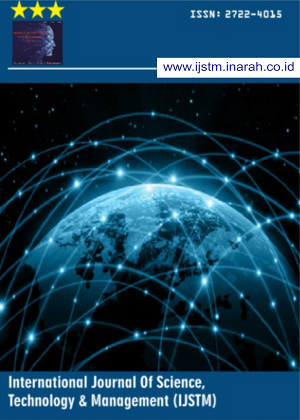Analysis of International Competitive Strategy of BHS Sarong PT Behaestex
Abstract
This study aims to determine the competitive strategy analysis of PT. Behaestex and recommends a competitive strategy analysis of PT. Behaestex that must be developed in order to increase business competitiveness. Data collection uses document analysis to understand holistically about the unique phenomena in the research object of PT. Behaestex. The analysis method used is qualitative descriptive case study. SWOT analysis shows that the company needs to increase the strengths of the company to be known by consumers and be able to compete with similar companies, especially globally or internationally. Strategies that can be concluded from the SWOT matrix include: SO strategy, namely using the company's strengths in the field of production to control international market share, WO strategy, namely forming a marketing team to expand international marketing reach, ST strategy, namely by diversifying products according to international consumer demand, and WT strategy, namely introducing products to all employees and maximizing production effectiveness.
Downloads
References
Usmansyah, Subiyantoro.H, Effects of gross domestic product of textile and textile product to reserve for foreign exchange and labor absorption of textile and product textile, Journal Research of Social Science Economics and Management,2, 2023.pp.2752-2760.
Sugeng, Rohman.A.N,Romasindah. W, Saiful.S, Regulatory and policy arrangement of the textile industry and national textile products for clothing resilience, International Journal of Research and Innovation in Social Science, IV, 2022.pp.5-15.
Ningsih. E.A, Diawati. L, Sari. H, Bahagia. S.N, The effectiveness of safeguard measures in elevating the competitiveness of domestic industry : case study of Indonesia’s textile industry, Procedia Computer Science, 234, 2024.pp.699-709.
Siswanto. D.J, Dewi. E.S, Wahyudii. I, Syah. T.Y.R, Analysis of factors affecting the exports of batik in Indonesia, Social Science, 3, 2022.pp.2081-2089.
Nurkomariyah. S, Tyasti. A.E, The effectiveness of fabric safeguards in protecting and improving the indonesian textile industry competitiveness, Jurnal Manajemen & Agribisnis, 19,, 2022.pp.351-366.
Masroor. N, Asim. M, SMEs in the contemporary era of global competition, Procedia Computer Science, 158,, 2019.pp.632-641.
Batubara. F.H, Masitoh. E, The effect of factor value of production industrial textile and textile products on export and its impact on gross domestic product : partial least square approach, Jurnal Ekonomi, 12, 2019.pp.403-408.
Knight. G.A, Entrepreneurship and strategy in the international SME, Journal of International Management, 7, 2001. pp.155-171.
Lantu. D.C, Rosmiati. M, Herliana.S, Chaerudin. R, Lawiyah. N, Indonesia’s fashion export performance a preliminary case study, Review of Integrative Business and Economics Research, 10, 2021. pp.360-368.
Sutrisno. A, Textile industry in indonesia amidst the impact of the covid-19 coronavirus pandemic, Journal of Government Studies, 2, 2022. pp.1-8.
Hagen. B, Zucchella. A, Cerchiello. P, Giovanni. N.D, International strategy and performance-clustering strategic types of SMEs, International Business Review, 21, 2012. pp.369-382.
Julien. P.A, Ramangalahy. C, Competitive strategy and performance of exporting SMEs : An empirical investigation of the impact of their export information search and competencies, Spring, 21, 2003. pp.227-245.
Sinaga. R.I. P, Sari. D.L.S, Storyna. H, Simamora. B. The impact of the mandatory application of indonesian national standards (SNI) and the international organization for standarization (ISO) of textile and textile products on the import export of textile and textile products in indonesia, Turkish Journal of Computer and Mathematics Education, 12, 2021. pp.1460-1477.
Copyright (c) 2025 International Journal of Science, Technology & Management

This work is licensed under a Creative Commons Attribution-ShareAlike 4.0 International License.
































